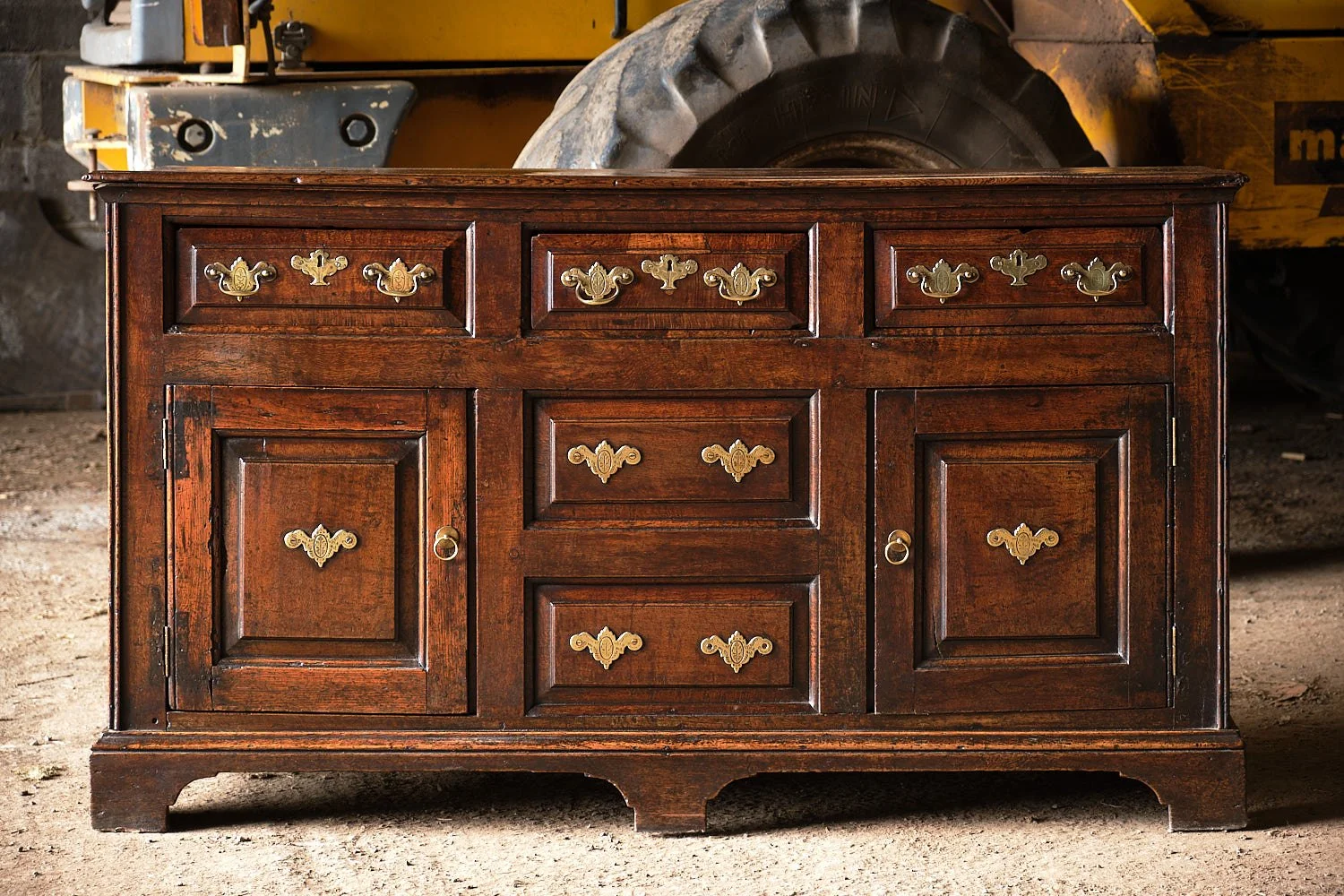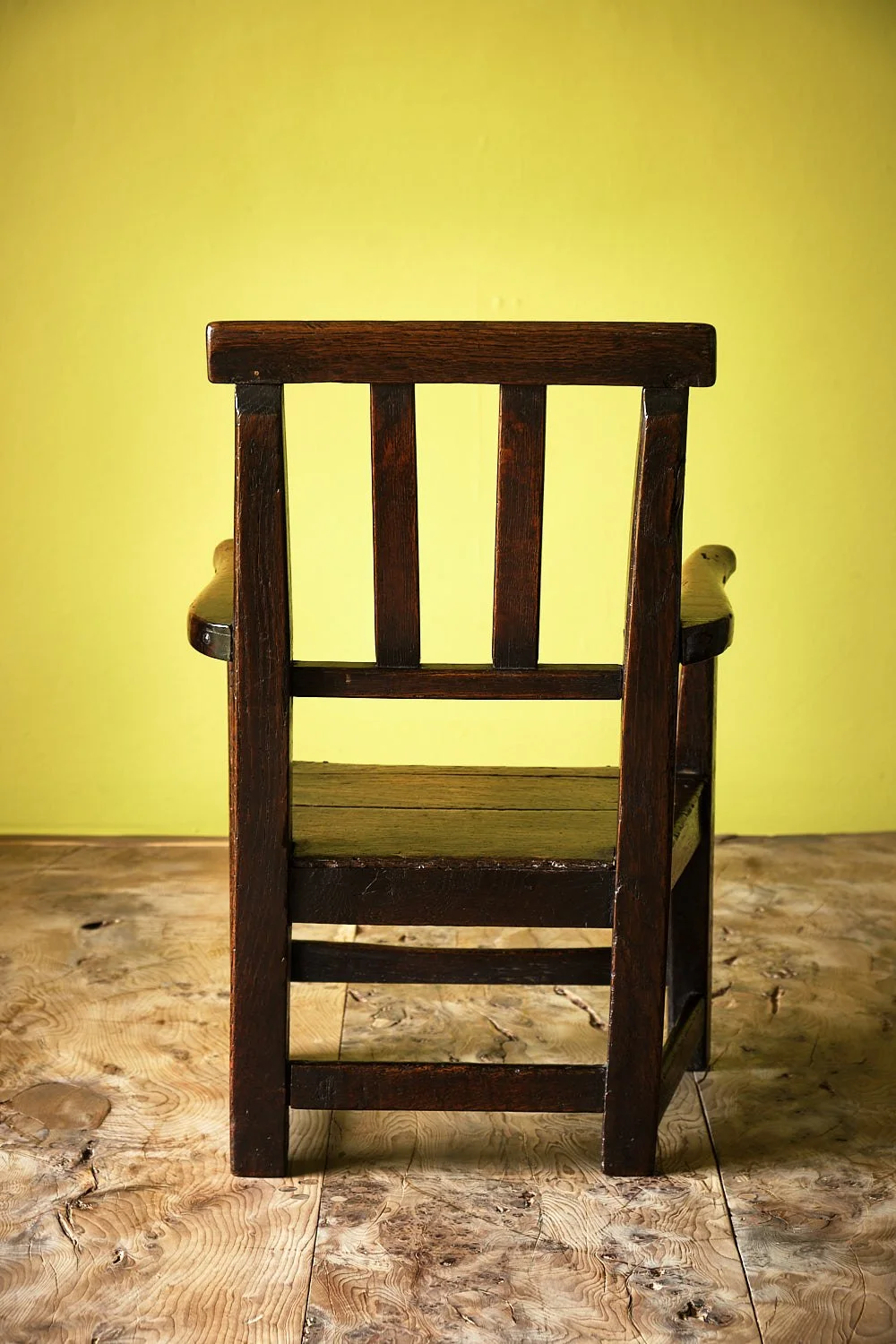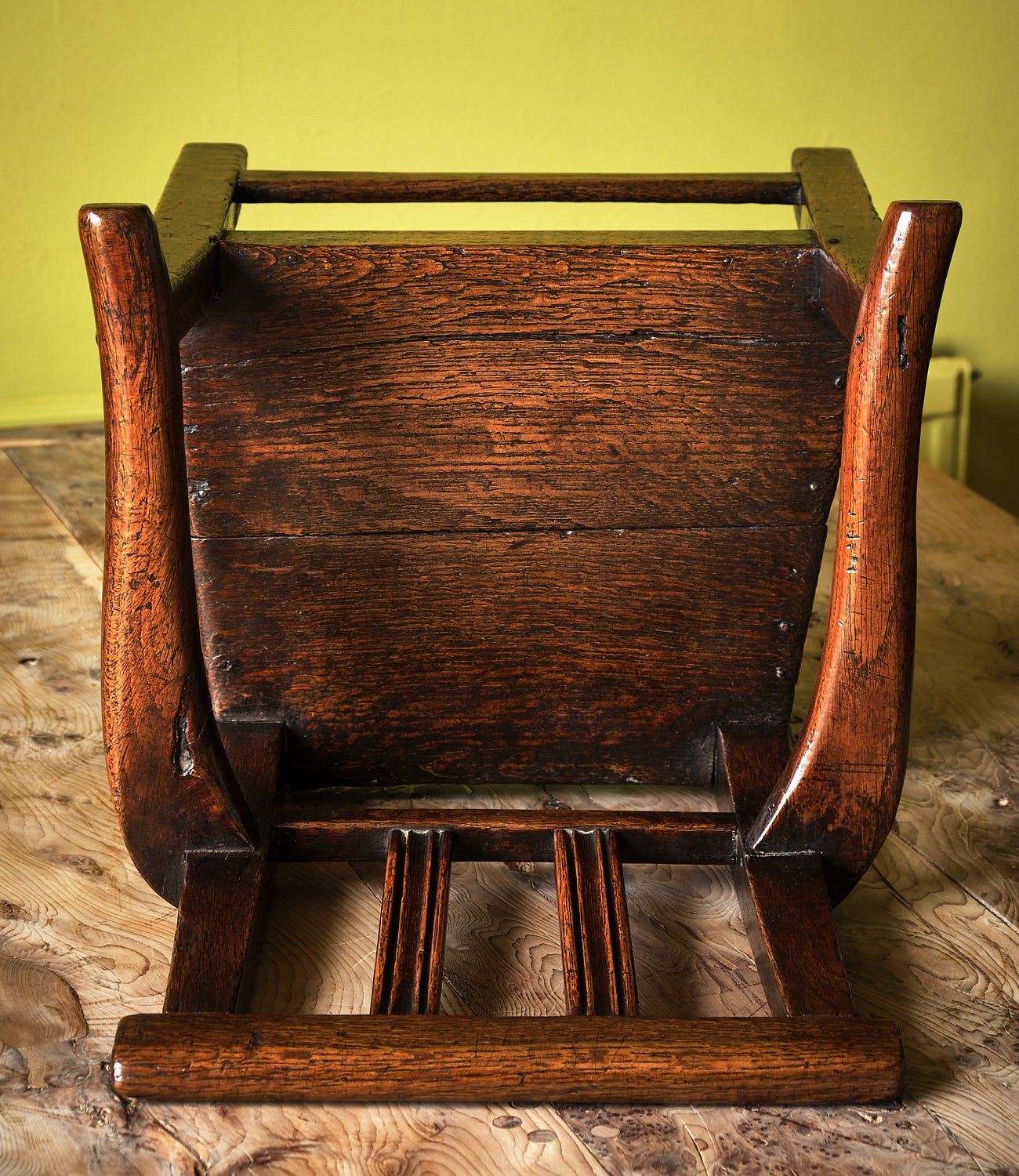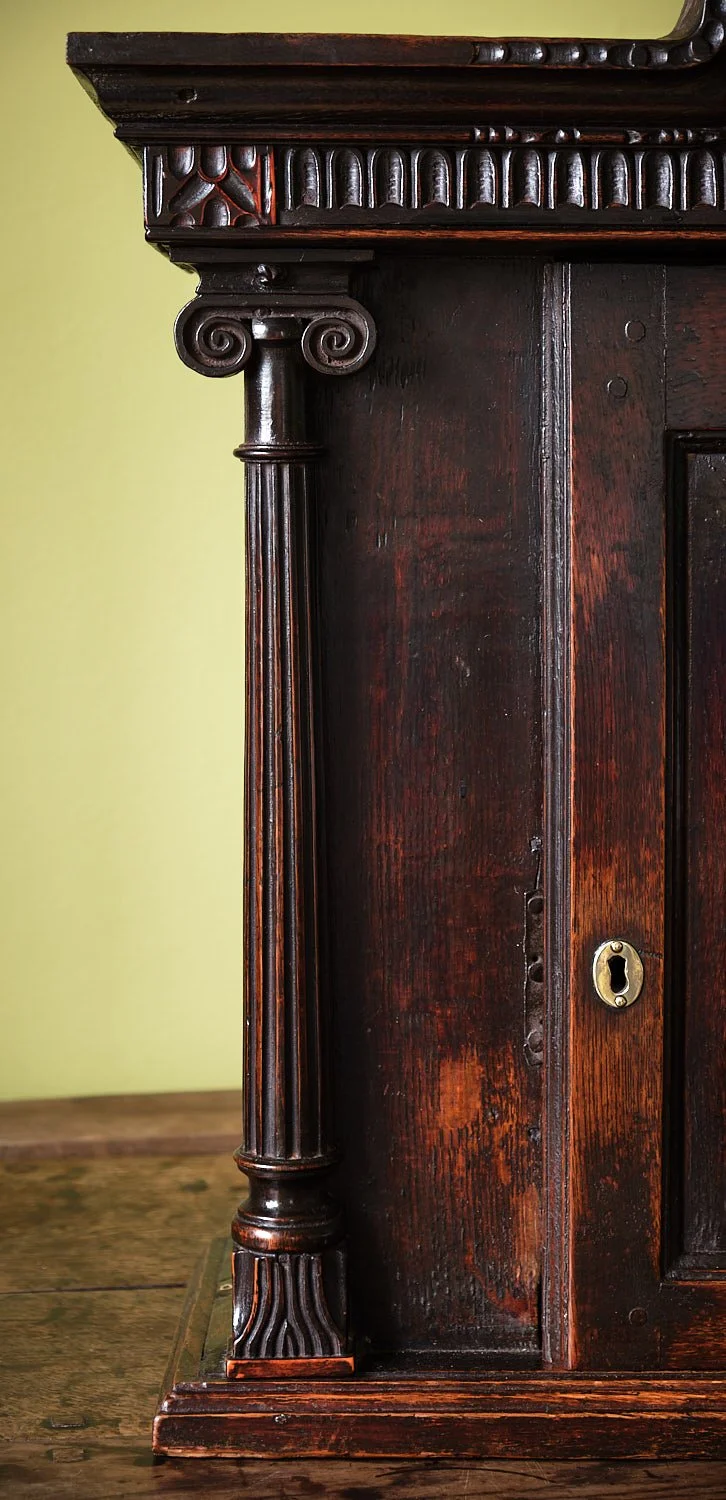 Image 1 of 3
Image 1 of 3

 Image 2 of 3
Image 2 of 3

 Image 3 of 3
Image 3 of 3




Late 17th Century Oak Side Chair
An unusual oak side chair, closely related in its design to the caned chairs of the late 17th century - the slightly carved cresting rail, the turned legs and stretchers, both front and rear, along with the framed seat planted onto the front legs. The circular rebate in the seat is a feature more commonly found on hall chairs.
The chair is in excellent condition with a fine surface and colour. English or Welsh, circa 1690-1720.
Literature:
For a similar seat construction, see Fig 4:243 Page 519 “ Oak Furniture, The British Tradition” by Victor Chinnery, Antique Collectors` Club Publication, 1979. and again in “Welsh Furniture 1250-1950, A Cultural History of Craftsmanship and Design” by Richard Bebb, published by Saer Books, 554, page 320, vol one.
An early example of the dished seat can be found on a fine armchair of circa 1625, after a design by Francis Cleyn, illustrated in detail on page 257 of Victor Chinnery`s “Oak Furniture, The British Tradition”.
Dimensions:
94 cms high, 46 cms at the front of the seat, 50 cms deep.
An unusual oak side chair, closely related in its design to the caned chairs of the late 17th century - the slightly carved cresting rail, the turned legs and stretchers, both front and rear, along with the framed seat planted onto the front legs. The circular rebate in the seat is a feature more commonly found on hall chairs.
The chair is in excellent condition with a fine surface and colour. English or Welsh, circa 1690-1720.
Literature:
For a similar seat construction, see Fig 4:243 Page 519 “ Oak Furniture, The British Tradition” by Victor Chinnery, Antique Collectors` Club Publication, 1979. and again in “Welsh Furniture 1250-1950, A Cultural History of Craftsmanship and Design” by Richard Bebb, published by Saer Books, 554, page 320, vol one.
An early example of the dished seat can be found on a fine armchair of circa 1625, after a design by Francis Cleyn, illustrated in detail on page 257 of Victor Chinnery`s “Oak Furniture, The British Tradition”.
Dimensions:
94 cms high, 46 cms at the front of the seat, 50 cms deep.









































